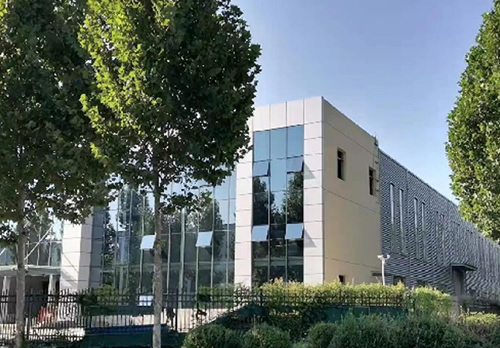As the main pavement type of high-grade highways in China, the durability and safety of asphalt pavement are directly related to the operation status and traffic efficiency of the highway. However, cracking is one of the common diseases of asphalt pavement, which not only affects the comfort of driving, but may also lead to further damage to the pavement structure. Therefore, the treatment of asphalt pavement cracks has become an important issue in highway maintenance and management. This article aims to review the current technological progress in the treatment of asphalt pavement cracks and propose implementation strategies.
2、 Types and Causes of Asphalt Pavement Cracks
Asphalt pavement cracks are mainly divided into transverse cracks, longitudinal cracks, and mesh cracks. Horizontal cracks are usually caused by thermal expansion and contraction due to temperature changes, while longitudinal cracks are often due to improper pavement structure design or construction quality issues. Mesh cracks may be caused by insufficient performance of asphalt mixture or uneven settlement of the base layer. Understanding the types and causes of cracks is a prerequisite for effective crack management.
3、 Progress in Crack Treatment Technology for Asphalt Pavement
In recent years, with the advancement of materials science and construction technology, significant progress has been made in the treatment of asphalt pavement cracks.
Material technology: New repair materials such as modified asphalt and polymer composite materials have better adhesion and durability, which can effectively fill cracks and extend the service life of road surfaces.
Construction technology: The pre-treatment and repair processes for cracks are constantly innovating, such as using infrared heating, ultrasonic testing, and automated construction equipment, which improves the efficiency and effectiveness of crack treatment.
Monitoring technology: Intelligent monitoring systems such as road crack automatic detection vehicles and drone detection technology can monitor road conditions in real time, providing scientific basis for crack treatment.
4、 Implementation strategy for crack treatment of asphalt pavement
The following strategies are crucial for the treatment of asphalt pavement cracks:
Prevention oriented: By improving road surface design, enhancing construction quality, and strengthening maintenance management, the occurrence of cracks can be reduced.
Timely repair: Once cracks are found, they should be repaired immediately to avoid crack expansion and further damage to the road surface structure.
Technological innovation: Actively introducing new technologies, materials, and processes to improve the technological content of crack treatment.
Intelligent management: Utilizing intelligent monitoring systems to achieve real-time monitoring of road conditions and scientific decision-making for crack treatment.
5、 Conclusion
The treatment of asphalt pavement cracks is an important task in highway maintenance and management. By summarizing technological progress and proposing implementation strategies, this article aims to provide reference for the treatment of asphalt pavement cracks. In the future, with the continuous advancement of technology, it is believed that the treatment of asphalt pavement cracks will be more efficient and intelligent.
2、 Types and Causes of Asphalt Pavement Cracks
Asphalt pavement cracks are mainly divided into transverse cracks, longitudinal cracks, and mesh cracks. Horizontal cracks are usually caused by thermal expansion and contraction due to temperature changes, while longitudinal cracks are often due to improper pavement structure design or construction quality issues. Mesh cracks may be caused by insufficient performance of asphalt mixture or uneven settlement of the base layer. Understanding the types and causes of cracks is a prerequisite for effective crack management.
3、 Progress in Crack Treatment Technology for Asphalt Pavement
In recent years, with the advancement of materials science and construction technology, significant progress has been made in the treatment of asphalt pavement cracks.
Material technology: New repair materials such as modified asphalt and polymer composite materials have better adhesion and durability, which can effectively fill cracks and extend the service life of road surfaces.
Construction technology: The pre-treatment and repair processes for cracks are constantly innovating, such as using infrared heating, ultrasonic testing, and automated construction equipment, which improves the efficiency and effectiveness of crack treatment.
Monitoring technology: Intelligent monitoring systems such as road crack automatic detection vehicles and drone detection technology can monitor road conditions in real time, providing scientific basis for crack treatment.
4、 Implementation strategy for crack treatment of asphalt pavement
The following strategies are crucial for the treatment of asphalt pavement cracks:
Prevention oriented: By improving road surface design, enhancing construction quality, and strengthening maintenance management, the occurrence of cracks can be reduced.
Timely repair: Once cracks are found, they should be repaired immediately to avoid crack expansion and further damage to the road surface structure.
Technological innovation: Actively introducing new technologies, materials, and processes to improve the technological content of crack treatment.
Intelligent management: Utilizing intelligent monitoring systems to achieve real-time monitoring of road conditions and scientific decision-making for crack treatment.
5、 Conclusion
The treatment of asphalt pavement cracks is an important task in highway maintenance and management. By summarizing technological progress and proposing implementation strategies, this article aims to provide reference for the treatment of asphalt pavement cracks. In the future, with the continuous advancement of technology, it is believed that the treatment of asphalt pavement cracks will be more efficient and intelligent.











 CALL
CALL PRODUCTS
PRODUCTS PROJECTS
PROJECTS CONTACT
CONTACT